Sewing machine common questions
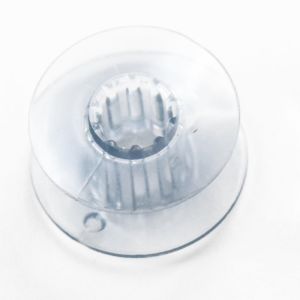

These common questions about sewing machines are the ones our experts hear the most often from our customers. You might also find the help you need by checking the common symptoms and solutions for sewing machines. When you’re ready to make a repair, search your model number to find replacement parts. Sears PartsDirect has the part you need, no matter where you bought your sewing machine.
Why is my sewing machine skipping stitches?
A bent or dull needle causes skipped stitches. Replace the needle if it's dull or bent. Make sure that you're using the proper needle for the fabric you're sewing. Incorrect machine threading also causes skipped stitches. Rethread the needle and bobbin correctly if necessary. If the above tips don't help, adjust the thread tension to avoid skipped stitches. If the machine still skips stitches, have it serviced by a technician.
Why is my sewing machine needle breaking?
Check the needle installation. Insert the needle all the way up into the needle clamp because the needle breaks if it goes too deep into the bobbin case while sewing. Use the correct size needle for your thread and fabric. Don't pull the fabric while sewing; pulling the fabric can break the needle. Gently guide the fabric while the feed dogs move the fabric under the presser foot. A loose presser foot allows fabric movement which can break the needle. Reset the presser foot if it's loose.
Why does my sewing machine thread bunch up?
Draw the threads back under the presser foot before sewing to prevent thread bunching. Thread the machine correctly and set the upper and lower thread tensions properly to avoid thread bunching. Clean the machine regularly because lint builds up in the shuttle race and along the thread path and causes thread bunching.
Why are my sewing machine stitches puckering the fabric?
Incorrect thread tension causes the fabric to pucker when sewing. Set the thread tensions correctly to avoid fabric puckering. Using two different sizes or kinds of thread also causes puckering. Use the same size and type of thread in the bobbin and the needle. A bent or dull needle can cause fabric puckering as can a loose pressure foot. Replace the needle if it's dull or bent and reset a loose presser foot to minimize fabric puckering. Sewing sheer or soft fabric also can cause puckering. Use an underlay of tissue paper when sewing sheer or soft fabric to avoid puckering.
Why isn't my sewing machine picking up the bobbin thread?
Check your needle--incorrect installation prevents the machine from picking up the bobbin thread. Insert the needle as far up as it will go with the flat side of the needle facing back. Make sure that you insert the bobbin correctly and draw up the bobbin thread before sewing. Check your needle threading. Raise the presser foot when seating the thread through the upper thread tension disks. If these tips don't help, then your sewing machine timing may be off. Adjust the timing or take your sewing machine in for service to repair the timing.
How often should I oil my sewing machine?
Follow the instructions in your owner's manual for oiling the sewing machine. Some sewing machines are pre-lubricated at the factory and don't need oiling. If your owner's manual has oiling directions and you use the sewing machine every day, oil the sewing machine weekly. If you sew once every week, oil the machine monthly. If you sew only once a month, oil the machine every 3 months. Clean and lubricate your sewing machine at least yearly. If you store the machine for an extended period, clean and oil the machine before using it.
How often should I change my sewing machine needle?
Change your sewing machine needle after 4 hours of sewing. Replace the needle any time you notice a change in your stitches or see the fabric puckering. Replace the needle if it's bent or damaged. Use a new needle when starting any new project.
How do I fix my sewing machine timing?
A service technician should usually adjust your sewing machine timing. The technician uses special tools for precise timing adjustment. Experienced sewers sometimes adjust the timing themselves by positioning the needle and adjusting the shuttle drive gear to synchronize the shuttle hook with the needle.
Why doesn't my sewing machine needle move?
Some sewing machines have a hand wheel clutch that disengages the needle drive for bobbin winding. Set up the machine for sewing if it's in the bobbin-winding mode. Check the drive belt and replace the belt if it's worn or broken. If these tips don't help, have the sewing machine looked at by a technician.
Why does my sewing machine top thread keep breaking?
Tight top thread tension breaks the top thread. Adjust the top thread tension to a medium setting for regular sewing. Check the needle plate for burrs around the needle hole. Burrs will snag and break the thread. Smooth out any burns using a needle file or fine sand paper. Because a damaged hook can break the thread, check the hook for damage and replace if needed.
Most common symptoms to help you fix your sewing machines
Choose a symptom to see related sewing machine repairs.
Main causes: dirty shuttle race, improper thread routing, incorrect thread tension…
Main causes: dirty shuttle race, wrong thread tension, bad needle timing, damaged needle, using the wrong type of needle…
Main causes: thread bunched up in the shuttle race, bad needle timing, internal drive gear failures…
Main causes: machine needs lubrication, internal gear failure…
Main causes: problems with the feed dogs, setting stitch length to 0…
Main causes: lack of lubrication, lint buildup, worn drive belt, faulty drive motor…
Main causes: disengaged clutch, broken drive belt, internal drive gear failure…
Main causes: faulty foot pedal, locked drive gears, wiring failure, bad drive motor…
Main causes: power supply failure, bad power cord, faulty On/Off switch…
Most common repair guides to help fix your sewing machines
These step-by-step repair guides will help you safely fix what’s broken on your sewing machine.
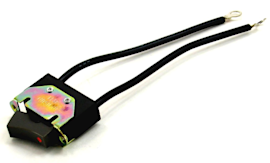
How to replace a sewing machine on/off switch
If the sewing machine is completely dead, replace the On/Off switch using these 6 steps.…
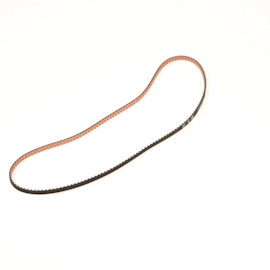
How to replace a sewing machine drive belt
You can replace a broken sewing machine drive belt in about 15 minutes. …
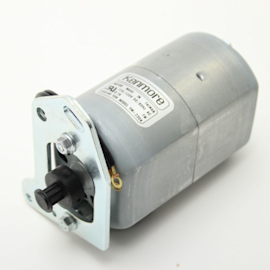
How to replace a sewing machine drive motor
If the drive motor on your sewing machine runs roughly or doesn't run at all, you can replace it in about 30 minutes usi…
Effective articles & videos to help repair your sewing machines
Use the advice and tips in these articles and videos to get the most out of your sewing machine.

Learn about all the convenient features on our Sears PartsDirect website that make your parts purchases easier.…

Get answers to frequently asked questions about Sears and Sears PartsDirect.…
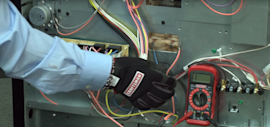
Learn how to use a multimeter to check for wiring problems in an appliance that's not working…
